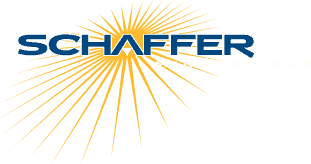Unless you need to stay current with metal punch technology – especially high-end turret-type CNC systems – you could be surprised by the caliber, versatility and breadth of sheet metal fabrication that punching makes possible.
Punch technology is an important production option to consider because it accommodates several variables – and integrates multiple techniques – to create tailored, optimized metal fabrication. When it comes to the versatility and flexibility necessary to customize a fabrication solution, you probably need to see today’s high-end CNC turret punch to believe it.
- Speed has always been a key punch attribute. Today, Schaffer utilizes a punch with a stroke rate up to 1200 hits per minute. Depending on material thickness the punch can be faster than a fiber or CO2 laser.
- The accuracy that minimizes variation from hole-to-hole is +/- .005. The dimensional precision is +/- .002.
- Because the system can hold up to 210 automatically loaded and numerically controlled tools, Schaffer can utilize multiple tools in a highly tailored program of operations.
- The versatility includes tools for punching forms – during a single hit – to create features that normally would be considered secondary operations. From counter-sinking and tapping extrusions to bends and even louvers. The punch sequence can also include part deburring.
- The capacity for a 60×120 sheet dramatically improves nesting capability and sheet utilization.
- Tool-control software and automation provides production versatility along with consistent precision. A punch program, for example, creates a tailored punch operations sequence that optimizes manufacturability. Individual control of tools, like a counter sink, ensures precise, repeatable tool force to achieve consistent depth of a feature.
- A punch is not limited by material type, meaning that it can handle non-laser materials like copper, brass or screen materials.
There is little or no resemblance to the old-school punch that you might envision blanking out flat, uncomplicated parts. Today’s CNC turret punch is a sophisticated fabrication method that enables analyzing, planning and refining the best-possible manufacturing approach.




